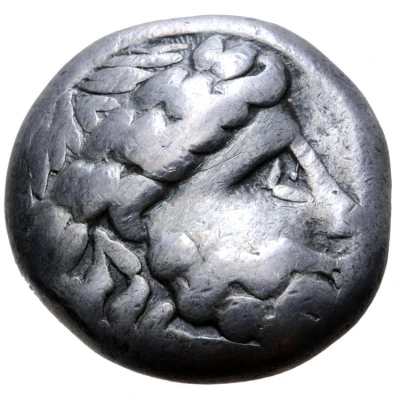


© Roma Numismatics Limited
Tetradrachm Wulstlorbeer Type 300 BC - 201 BC
| Silver | 13.35 g | 21 mm |
| Issuer | Dacians of Transylvania |
|---|---|
| Type | Standard circulation coin |
| Years | 300 BC - 201 BC |
| Value | Tetradrachm (4) |
| Currency | Drachm |
| Composition | Silver |
| Weight | 13.35 g |
| Diameter | 21 mm |
| Shape | Round (irregular) |
| Technique | Hammered |
| Orientation | Variable alignment ↺ |
| Demonetized | Yes |
| Updated | 2024-10-09 |
| Numista | N#195633 |
|---|---|
| Rarity index | 97% |
Reverse
Rider on horseback to left, right arm raised.
Comment
Agriş Type according to Preda MGD.Examples of this type:
• Example #1 (13.35g, 21mm, 3h, Very Fine):
© Image courtesy of Roma Numismatics Limited
◦ Ex-Hermann Lanz Collection; published in Michaela Kostial - "Kelten im Osten. Gold und Silber der Kelten in Mittel und Osteuropa, Sammlung Lanz", München, 1997, #386;
◦ Auctioned by Roma Numismatics Ltd, E-Sale 60, 1 August 2019, Lot 19. Sold for 1,300 GBP.
Interesting fact
The Tetradrachm (Wulstlorbeer Type) coin from the Dacians of Transylvania, which was minted between 300 BC and 201 BC, features a unique design on its reverse side. Instead of the usual depiction of a deity or a mythological creature, this coin features a stylized representation of a bee. This design element is believed to have been inspired by the Dacian mythology, in which the bee was considered a symbol of fertility and prosperity. This coin is a rare example of a currency that combines both ancient mythology and entomology (the study of insects) in its design.



